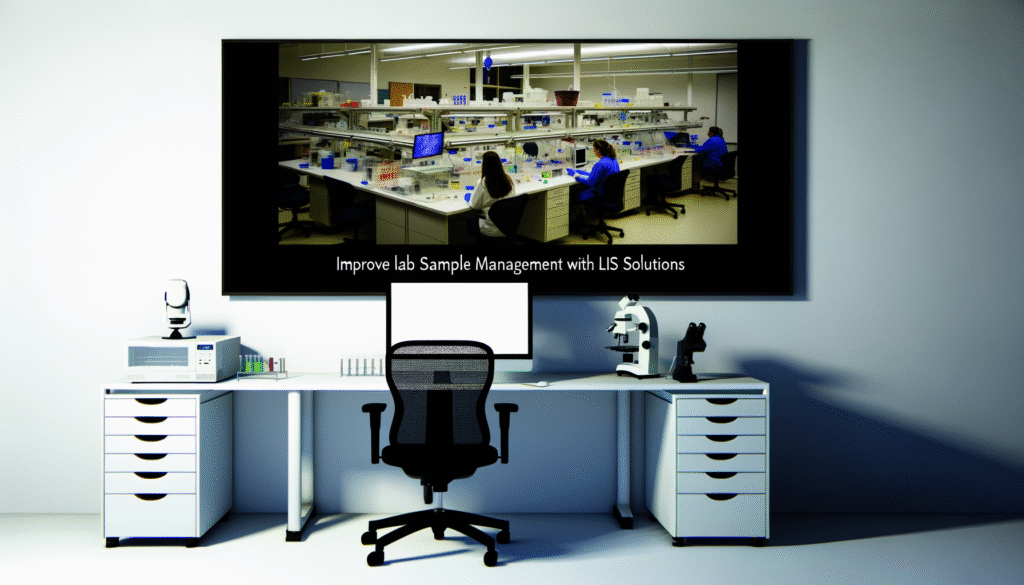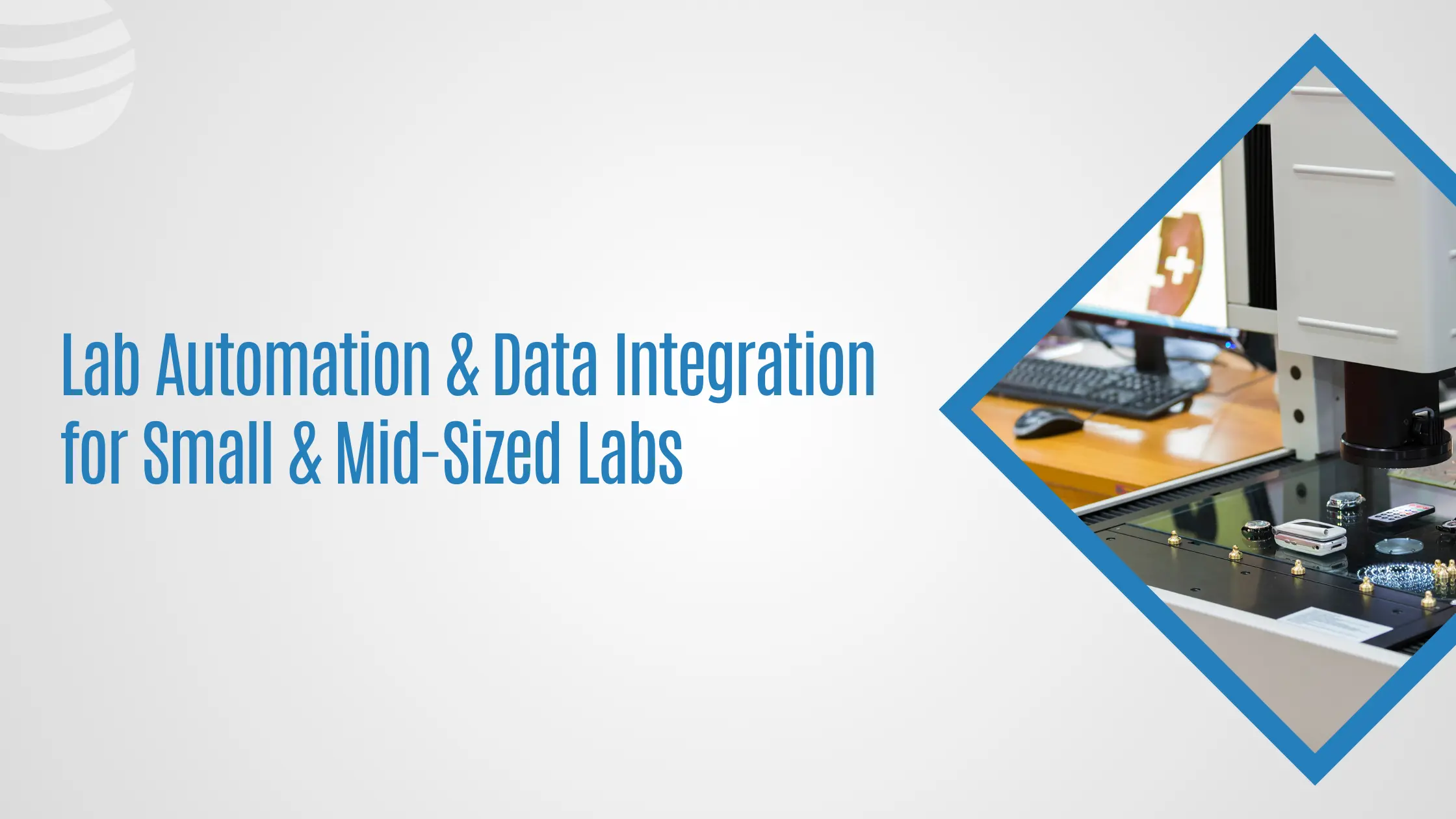Transforming your Lab’s Pre-Analytical Processes: The Impact of LIS on Sample Management
Introduction to Pre-Analytical Processes in Laboratories
The pre-analytical phase encompasses all procedures that occur before a sample reaches the analytical stage of testing. These steps include order entry, patient identification, specimen collection, labeling, handling, and transport. Errors during this phase can affect diagnostic results and patient safety. Laboratory Information Systems (LIS) are essential tools in reducing human error, ensuring compliance, and improving sample traceability across the pre-analytical lifecycle.
Understanding the Role of LIS in Sample Management
A Laboratory Information System acts as the digital backbone of modern laboratories. It automates workflows, facilitates real-time tracking, and standardizes data entry, improving both accuracy and operational efficiency. LIS solutions integrate with diagnostic instruments, Electronic Health Records (EHRs), barcode systems, and inventory management software to ensure seamless sample processing and management from collection to analysis.
Challenges in Manual Sample Management
- Mislabeling: Handwritten or manual labeling can lead to specimen mix-ups and diagnostic errors.
- Data Entry Errors: Manual entry increases the risk of transcription errors in patient demographics and test requisitions.
- Delayed Turnaround Time: Manual sorting, validation, and transport lead to slower processing and reporting.
- Limited Traceability: Manual tracking systems lack real-time monitoring for specimen location and condition.
LIS Integration and Workflow Optimization
Integrating a Laboratory Information System into pre-analytical operations simplifies workflow paths and enhances endpoint validation. LIS modules handle specimen accessioning, barcode generation, lab test ordering, and interdepartmental communication effectively. Integration features include:
- Barcode-Based Tracking: Each sample receives a unique identifier, enabling precise tracking and location mapping.
- Automatic Validation Rules: The LIS verifies completeness of orders, appropriateness of tests, and availability of patient information before proceeding.
- Chain of Custody Monitoring: Track the entire lifecycle of each sample including timestamps, handlers, and storage conditions.
- EHR Synchronization: Seamless data exchange between LIS and hospital systems reduces redundancy and expedites data access for caregivers.
Minimizing Pre-Analytical Errors with LIS
LIS systems incorporate safety checks and alerts that significantly minimize pre-analytical errors such as incorrect container use, wrong patient samples, or tests performed without consent. Error reduction is achieved through:
- Real-Time Alerts: Notify staff of incomplete orders or missing patient identifiers.
- Specimen Collection Guidance: Provide instructional prompts based on test protocols and patient needs.
- Temperature and Condition Monitoring: Integrated IoT sensors ensure samples remain viable throughout transport and storage.
- Time-Stamps and Audit Trails: Automated logging of every action enhances accountability and compliance with accreditation standards.
Improving Turnaround Time (TAT) Through LIS Automation
Rapid diagnostics depend heavily on reducing unnecessary delays. LIS facilitates faster turnaround by streamlining key activity nodes:
- Auto-Accessioning: Upon specimen receipt, an LIS can auto-generate accession numbers and forward test requisitions to relevant departments immediately.
- Priority Queueing: The system categorizes STAT tests and flags them for urgent processing, ensuring deadlines are met.
- Pathologist Notifications: Pathologists receive instant updates when critical values or abnormal findings are detected.
- Sample Batching and Routing: LIS algorithms determine the optimal path for high-throughput processing and minimize idle time.
Standardization and Regulatory Compliance
Legal and regulatory bodies including CLIA, CAP, and ISO 15189 demand detailed documentation and consistent procedures. A Laboratory Information System promotes uniformity in lab operations and supports full audit-readiness by offering:
- Configurable Workflow Templates: Standardize sample handling steps across different locations and staff members.
- Compliance Dashboards: Enable tracking of procedural adherence and flag any deviations from SOPs.
- Electronic Documentation: Maintain digital signatures, consent forms, and chain-of-custody records.
- Credential-Based Access: Restrict access to sensitive patient data, ensuring HIPAA and GDPR compliance.
Data Integrity and Interoperability
Reliable diagnostics depend on accurate data. LIS platforms ensure data quality by enforcing structured data entry, version control, and cross-platform interoperability. Key benefits include:
- HL7 and FHIR Compatibility: Support standardized communication protocols to exchange sample data with EHRs, LIMS, and billing systems.
- Data Validation Rules: Detect and prevent erroneous entries using programmed filters and mandatory field checks.
- Automated Backup and Recovery: Protect patient and specimen records through redundancies and secure storage systems.
- Audit-Ready Archives: Preserve full histories of all lab activities, useful for legal, billing, and research purposes.
Enhancing Patient Safety with LIS
LIS directly contributes to patient safety by reducing diagnostic errors and increasing transparency in test handling. Patient-centered improvements include:
- Positive Patient Identification (PPID): Scan-based verification during collection ensures correct identification before labels are printed.
- Critical Result Alerts: Auto-alerts notify physicians rapidly when results cross dangerous threshold limits.
- Reduced Recollection Events: Improved data quality and sample tracking lower the frequency of recollection due to compromised or mislabeled specimens.
- Quicker Clinical Decision-Making: Fast, trusted results enable timely treatment initiation and fewer complications.
Optimizing Resource Utilization and Cost-Effectiveness
Resource constraints are a challenge in today’s healthcare environment. LIS contributes to sustainable lab operations by minimizing waste and optimizing staff productivity. These efficiency gains include:
- Labor Reduction: Automation frees lab technologists from repetitive tasks, enabling higher-level interventions.
- Inventory Control: Real-time reagent and consumable tracking reduces expiration losses and procurement errors.
- Test Utilization Management: Dashboards and usage reports help prevent unnecessary or duplicate tests, saving costs.
- Predictive Analytics: Historical data enables forecasting of sample intake patterns for better lab capacity planning.
Scalability and Future-Proofing Laboratory Operations
Laboratory workloads and testing portfolios are constantly evolving. LIS platforms support modular growth and technology adaptation by offering:
- Cloud-Based Architecture: Enables flexible remote access, seamless updates, and secure data management.
- Vendor-Neutral Interfaces: Accommodate new analyzers and middleware without complete system replacements.
- Customizable Reporting Tools: Labs can design outputs that match clinician requirements and improve care coordination.
- AI and ML Integration: Emerging features use machine learning to identify trends, anomalies, and workflow inefficiencies.
LIS as a Catalyst for Pre-Analytical Excellence
Transforming the pre-analytical phase with a robust Laboratory Information System enhances accuracy, improves turnaround times, and increases accountability. By digitizing sample management, labs eliminate procedural inconsistencies, comply with strict regulatory guidelines, and provide higher-quality outcomes. Future-ready LIS solutions are indispensable in delivering efficient and error




